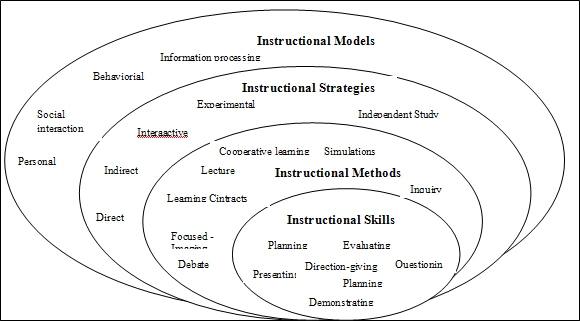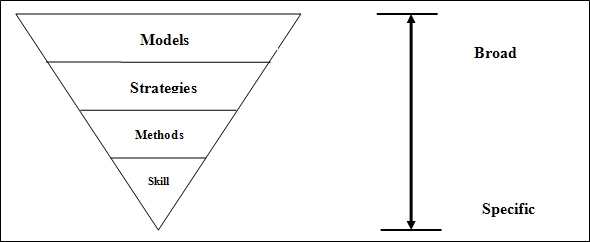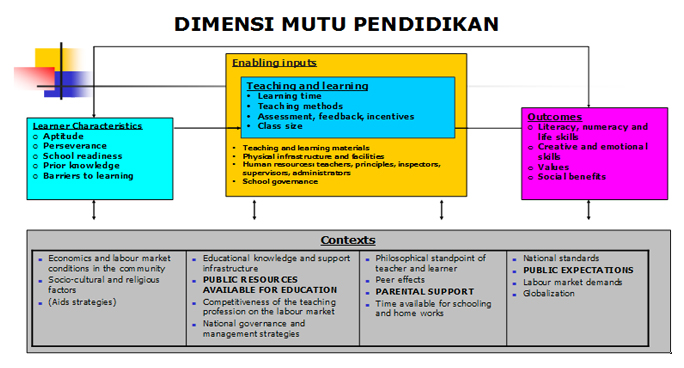SMALL NOTES FROM TOT WDD PROGRAM
IN WEST KALIMANTAN PROVINCE
AUGUST 10 – 17, 2008
By Suparlan *)
1. Overall Activities
TOT – WDD in West Kalimantan were held from 10th to 17th of August 2008. Overall TOT – WDD activities was running successfully. All facilitators have done their duties very well, so did the participants. Six facilitators were from LPMP Jakarta. The facilitators were qualified, both in their competencies in learning materials and methods. The participants are 50 persons. The participants were from 10 districts of West Kalimantan. As a person was in charge in monitoring activities, I was very satisfied for the implementation of TOT – WDD activities.
2. What management functions that must be delivered to the school in SBM?
This question was usually crucial for most facilitators and participants. Because most of them belief that there were some management functions could not delivered to the schools. I did not agree with this concept. Principally I do belief that all management function must be delivered to school. The recruitment process of school principal for the time being is still responsible by Head of District Educational Institution. But this is just very small function of management. So, the conclusion is most of the management function in the concept of School-Based Management must be delivered to school. The management functions are planning, organizing, actuating, up to budgeting, controlling, monitoring, and reporting.
3. Where is the position of PAKEM in the concept of Instructional Model, Instructional Strategy, Instructional Methods, and Instructional Skills?


According to the above two charts, I have an opinion that PAKEM in not a method, because in the PAKEM the teachers may use multimedia and multi-method in their learning process. PAKEM is an instructional approach.
4. Educational Quality Dimensions. What is that?

Source: EFA Global Monitoring Report 2005, UNESCO, page. 36.
5. Pillars of Effective School
AIBEP developed pillars of effective school as below:
- Visi dan misi yang jelas (clear vision and missions)
- Kepala sekolah yang professional (professional principal)
- Guru yang profesional (professional teacher)
- Lingkungan belajar yang kondusif (conducive learning environment)
- Ramah siswa (friendly students)
- Manajemen yang kuat (strong management)
- Kurikulum yang luas dan berimbang (broad and balance curriculum)
- Penilaian dan pelaporan prestasi siswa yang bermakna (meaningful evaluation and reporting of student achievement)
- Pelibatan masyarakat yang tinggi (strong community engagement)
To enrich the pillars of effective school in the modules of AIBEP, may be we can compare with five studies on effective school from UNESCO as below:
| Purkey & Smith, 1983 | Levine & Lezotte, 1990 | Scheerens, 1992 | Cotton, 1995 | Sammons, Hillman & Mortimore, 1995 |
| § Strong leadership | § Outstanding leadership | § Educational leadership | § School management and organization, leadership and school improvement, leadership and planning | § Professional leadership |
| § Clear goals on basic skills | § Focus on central learning skills | § – | § Planning and learning goals and school-wide emphasis on learning | § Concentration on teaching and learning |
| § Orderly climate, achievement-oriented policy, cooperative atmosphere | § Productive climate and culture | § Pressure to achieve, consensus, cooperative planning, orderly atmosphere | § Planning and learning goals, curriculum planning and development | § Shared vision and goals, a learning environment, positive reinforcement |
| § High expectations | § High expectations | § – | § Strong teacher-student interaction | § High expectation |
| § Frequent evaluation | § Appropriate monitoring | § Evaluative potential of the school, monitoring of pupil progress | § Assessment (district, school, classroom level) | § Monitoring progress |
| § Time on task, reinforcement, streaming | § Effective instructional arrangements | § Structured teaching, effective learning time, opportunity to learn | § Classroom management and organization and organization, instruction | § Purposeful teaching |
| § In-service training/staff development | § Practice-oriented staff development | § – | § Professional development and collegial learning | § A learning organization |
| § – | § Slient parental involvement | § Parent support | § Parent-community involvement | § Home-school partnership |
| § – | § – | § External stimuli to make schools effective § Phisical and material school characteristics § Teacher experience § School context characteristics | § Distinct school interactions § Equity § Special programmes | § Pupil rights and responsibilities |
Source: Global Monitoring Report 2005,UNESCO.
6. Training materials and methods
I identified the training material and its relation with the suitable methods that can be used in the training activities. I know that the methods are not “panacea” But, based on the experiences in training activities, I tried to note that the materials can be delivered with suitable methods as below:
| No. | Materials | Methods |
| 1 | Educational policies and information, such as PNFI, teacher certification | Brainstorming Assignment Using media (video) |
| 2 | PUG | Sosiodrama, brainstorming |
| 3 | Community participation | Role playing Group discussion |
| 4 | National Standard of Education | Reading materials Group discussion |
| 5 | Pillars of Effective School | Brainstorming |
| 6 | PAKEM and CTL | Group practices |
| 7 | MBS | Brainstorming |
| 8 | School Development Plan (RPS) | District group practices |
| 9 | Etc. | Etc. |
Then the facilitators and participants must select the suitable methods with the material training in the TOT activity.
7. The Participants and Their Commitment for SATAP
I heard form participant that the participants did not contact yet with the SATAP. They do not know the location. They did not know what kinds of school building that already built the location. This was very important to make sure that participants have a strong commitment for SATAP. They have to know the real conditions of the SATAP.
8. References
The only one of training material is module. I know that the modules were very complete. I was very happy if the modules will be printed in a short time. But, the participant will very happy if their have references about the training materials. Such as on management practices, school committee, and so on. If you don mind, I offer to you some titles for references as bellow
- A book on multiple intelligence theory in a title of “Mencerdaskan Kehidupan Bangsa, written by Suparlan.
- Become an Effective Teacher, written by Suparlan
- Teacher as profession, written by Suparlan.
- Scholl Committee: History and The Prospect in The Future, written by Sri Renani Pantjastuti cs.
- And other books.
When I was involved in a comparison study on school committee in Gibb Street Primary School in West Australia, I knew that their library was very well managed. I want these SATAP school will be given some books for their small library.
9. End of Note
Thank you very much for giving involvement of TOT – WDD program monitoring activities. I do hope that this program will be successfully ended for the improvement of basic educational access and quality in Indonesia. The Indonesia – Australia partnership will be written with a golden ink in a recent history, like in supporting our independence from people of Australia in a period of 1945. Happy Indonesia’s Independence Day of August 17, 2008. Thank you so much.
*) Website: www.suparlan.com; E-mail: me [at] suparlan [dot] com.
Pontianak, August 16, 2008




